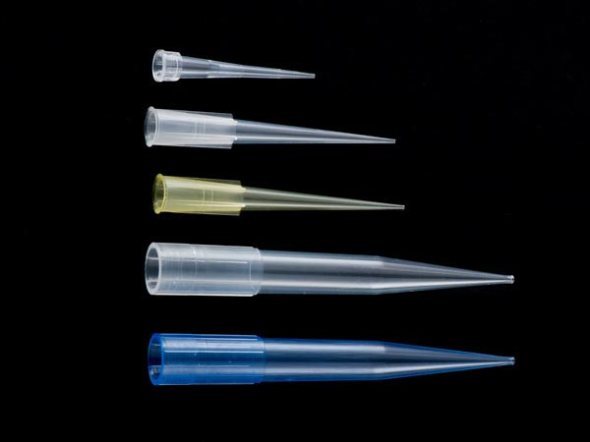A pipette is a tool used in chemical or biological laboratories to transport liquids under the concept of sucking the liquid to be measured into a vacuum space created by the air displaced within the tube. The measurement gives a good extent of accuracy in micro litre metrics.
Based on the volume that pipettes are calibrated to hold, there are several types of pipettes differentiated from each other by their size and their color and then a matching tip colour of appropriate sizes. The tips are the actual holders for the liquid to be measured, made from a plastic called polypropylene and are disposable and discarded on a single use. Pipette Tips enable easy replacement of the liquids used by different liquids to be measured for a specific lab experiment without wasting precious time and effort.
A particular type of tip for a pipette is the yellow pipette tip whose origin is China (Mainland). Clean and the hydrophobic surface ensures increased accuracy in measurement.
Tips have a color code for easy identification. They may be coloured natural (clear) for low volumes (0.1 – 10 micro litres), yellow (10 – 200 micro litres), or blue (100 – 1000 micro litres). Its capacity is 200 micro litres
Safe keeping:
Filter-tips have a little piece of foam plastic in the upper bending to prevent any contamination of the pipette.
Usually, all tips are stored in 8×12 boxes for 96 pieces in a straight-standing position. The spacing of tips in these boxes is usually specifically maintained for pipettes of multi channels.
Certain Conditions:
ü For a repeatable operation, operation consistency and good pipetting practices is important.
ü When sucking up a liquid the tip needs to be dipped 3 to 5 mm below the surface of the liquid straight up top to bottom- where the tip meets with the liquid surface.
ü During the release of the liquid, the pipette should be tilted to a 45 degree angle, and the tip placed against the side of the receiving vessel.
ü Surface tension of glass provides additional torsion those results in complete evacuation of the tip. Thus the tip can be made of glass.
ü To ensure accuracy and repeatability, the tip must never be wiped by any material and it should be dry before use. This allows only the proper level of humidity and evaporation is to the minimum.
ü If they are ‘To Deliver – TD’ pipettes, they should not be rinsed after they have delivered their contents. If the pipettes were calibrated ‘To Contain-TC’, rinsing is mandatory.
ü In case the liquid is quite thick or sticky, the pipette must be calibrated and carefully wipe its outside with a lint free tissue to remove the adhering liquid – without touching tip.
Ref: Google Books/Articles/Wikipedia
